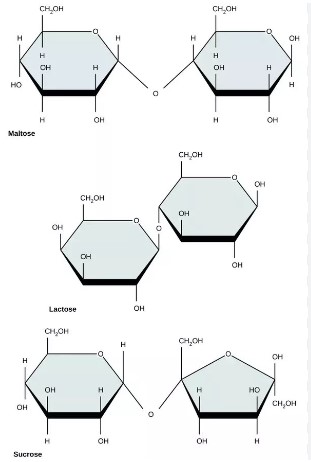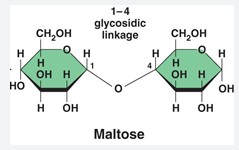Carbohydrates serve as the body’s primary energy source, with sugars playing a crucial role in our diet. Among the various types of sugars, trehalose and maltose stand out due to their unique properties and functions. These two disaccharides, while similar in their basic composition as sugars, have distinct characteristics that differentiate them significantly in both structure and function.
Trehalose and maltose are both disaccharides, but they differ in their chemical structure and the type of glucose bonds they contain. Trehalose consists of two glucose molecules connected by an α,α-1,1-glycosidic bond, whereas maltose is formed by two glucose units linked by an α,1-4-glycosidic bond. This structural difference influences their digestion, absorption, and overall impact on health.
The significance of these sugars extends beyond their molecular composition. Trehalose is known for its stability and protective properties in various organisms, while maltose plays a key role in the fermentation process, particularly in brewing and baking. Both sugars have distinct sources in nature, with trehalose being found in certain plants and fungi, and maltose resulting from the enzymatic breakdown of starch.

What is Trehalose?
Chemical Structure
Trehalose, a disaccharide made up of two glucose molecules, boasts a unique α,α-1,1-glycosidic bond. This bond is not just a chemical link but a cornerstone for trehalose’s stability and functional properties. Unlike the more common α,1-4-glycosidic bond found in other sugars, this unique structure endows trehalose with remarkable resilience and versatility.
Sources in Nature
Trehalose hides in plain sight, present in an array of organisms including yeasts, fungi, plants, and invertebrates. Its natural occurrence is not by chance but by necessity, serving as a vital energy source and stress protector in harsh conditions. Noteworthy sources include:
- Resurrection plants, which revive with just a touch of water,
- Desert-dwelling creatures like the tardigrade,
- Mushrooms and yeasts utilized in culinary arts and biotechnology.
Nutritional Value and Uses
The nutritional profile of trehalose is akin to that of glucose, providing a moderate energy source. However, its true value lies beyond mere calorific content. Trehalose is acclaimed for its protective effects on cells and proteins, making it indispensable in:
- Food industry: Enhances texture, flavor, and shelf life of products,
- Pharmaceuticals: Stabilizes proteins in vaccines and biologics,
- Cosmetics: Protects skin cells from dehydration and aging.
What is Maltose?
Chemical Structure
Maltose, another disaccharide, is constructed from two glucose units linked by an α,1-4-glycosidic bond. This bond facilitates a simpler digestion process, contrasting with the more complex trehalose. Its structure is pivotal for maltose’s role in energy provision and fermentation processes.
Sources in Nature
Maltose predominantly appears during the digestive breakdown of starch in plants and animals, and in the malting process in grains. It is abundantly found in:
- Germinating seeds,
- Sweet potatoes,
- Barley used in beer brewing,
- Infant formulas as a nutritional component.
Nutritional Value and Uses
While maltose delivers energy, its standout role is in fermentation, vital for brewing and baking. It offers:
- A sweet flavor with less sweetness than table sugar,
- Energy for yeast during fermentation, creating alcohol and leavening bread,
- Uses in culinary arts, enhancing flavors and textures.
Key Differences
Molecular Composition
The core difference between trehalose and maltose lies in their glycosidic bonds—α,α-1,1 for trehalose and α,1-4 for maltose. This distinction alters their stability, digestion, and functional roles in both nature and industry.
Digestion and Absorption
Trehalose and maltose undergo different metabolic pathways. Trehalose is digested by the enzyme trehalase, splitting it into two glucose molecules, a process occurring more gradually. In contrast, maltose is swiftly broken down by maltase, leading to a quicker absorption and a more immediate energy spike.
Health Impacts
The health implications of these sugars are nuanced. Trehalose’s slow digestion makes it potentially beneficial for blood sugar control, while its protective properties are being researched for therapeutic uses. Maltose, however, requires consideration due to its rapid impact on blood sugar levels, especially for individuals with diabetes or those monitoring their glycemic index intake.
Sources and Uses
The unique properties of trehalose and maltose have made them invaluable in various industries, from food production to pharmaceuticals. Understanding their sources and the breadth of their applications can reveal much about their roles in both nature and technology.
Trehalose in Food Industry
Trehalose’s stability and protective benefits make it a preferred ingredient in the food industry. It is used to:
- Enhance texture and shelf life: Trehalose helps maintain the desired texture of frozen foods and prevents the deterioration of flavor over time.
- Improve moisture retention: This is crucial for baked goods, keeping them soft and preventing staleness.
- Protect cells during drying: In products like instant coffee and dried fruits, trehalose helps preserve cell structure, retaining flavor and nutritional value.
Maltose in Brewing and Baking
Maltose is a key player in brewing and baking, where its fermentable qualities are essential:
- Beer brewing: Maltose, produced during the malting process, serves as the primary sugar used by yeast for fermentation, creating alcohol and carbon dioxide.
- Baking: It contributes to the browning of bread and creates the distinct flavors and textures associated with baked goods.
Other Commercial Uses
Both sugars have found their way into a variety of commercial applications:
- Pharmaceuticals: Trehalose stabilizes proteins in vaccines, making transportation and storage more reliable.
- Cosmetics: Its moisture retention properties are used in skincare products to hydrate and protect skin cells.
- Agriculture: Maltose serves as an energy source in animal feeds and as a growth substrate in plant tissue cultures.
Health Benefits
The health benefits of trehalose and maltose highlight their importance beyond mere energy sources, contributing to disease prevention and efficient energy production.
Trehalose and Disease Prevention
Trehalose has been studied for its potential in disease prevention, particularly:
- Neurodegenerative diseases: Its ability to stabilize proteins may help in preventing disorders like Alzheimer’s and Parkinson’s.
- Heart disease: By protecting cells from stress, trehalose could play a role in reducing heart disease risk.
Maltose and Energy Production
Maltose is pivotal for energy production in the body and in fermentation processes:
- Quick energy source: Its rapid breakdown and absorption provide an immediate energy boost.
- Fermentation: In industries, maltose is essential for the fermentation that produces alcohol and leavens bread.
Side Effects and Risks
While trehalose and maltose offer numerous benefits, it’s important to be aware of their potential side effects and risks.
Trehalose and Intolerance
- Trehalose intolerance: A rare condition, but individuals lacking the enzyme trehalase may experience digestive issues when consuming trehalose.
Maltose and Blood Sugar Levels
- Blood sugar spikes: Maltose’s quick absorption can lead to rapid increases in blood sugar levels, posing a challenge for individuals with diabetes.
FAQs
What is Trehalose?
Trehalose is a naturally occurring sugar composed of two glucose molecules. It is renowned for its exceptional ability to protect cells under stress conditions by stabilizing proteins and cell membranes. This sugar is found in a variety of life forms, from bacteria to higher plants and invertebrates, serving as an energy source and stress protectant.
How is Maltose Produced?
Maltose is primarily produced during the breakdown of starch in the germination process of seeds and in the digestive systems of animals. In the food industry, maltose is often produced by enzymatic hydrolysis of starch, making it a crucial ingredient in the production of beer, malted beverages, and various bakery products.
Can Trehalose and Maltose Affect Blood Sugar Levels?
Yes, both trehalose and maltose can affect blood sugar levels. However, trehalose is digested and absorbed more slowly than maltose, leading to a more gradual increase in blood sugar. Maltose, being quickly absorbed, can cause a rapid spike in blood sugar levels, which is an important consideration for individuals managing diabetes or blood sugar issues.
Are There Any Health Risks Associated with Consuming Trehalose or Maltose?
While both sugars are generally considered safe for consumption, excessive intake of any sugar, including trehalose or maltose, can lead to health issues. These include increased risk of weight gain, dental problems, and potentially adverse effects on blood sugar management. Individuals with specific health conditions should consult with a healthcare provider regarding their sugar intake.
Conclusion
Trehalose and maltose embody the diversity and complexity of carbohydrates in nature. Through their distinct chemical structures and physiological impacts, they play unique roles in both the natural world and human consumption. The key differences between these sugars—ranging from their molecular bonds to their effects on health—highlight the importance of understanding carbohydrates in a nuanced manner.
Choosing between trehalose and maltose, or understanding their roles in food and health, requires a comprehensive look at their benefits and potential downsides. As research continues to unveil the multifaceted roles of sugars like trehalose and maltose, it becomes increasingly clear that their contributions to life’s biochemistry are as profound as they are varied.

